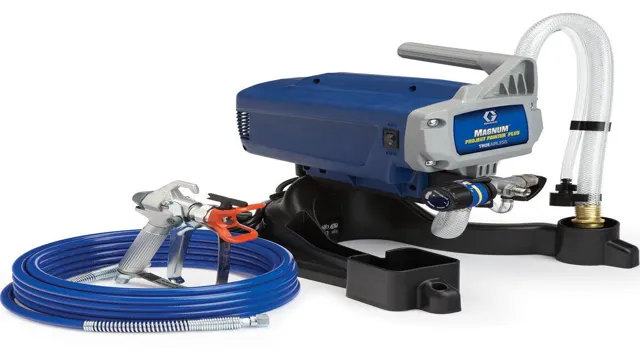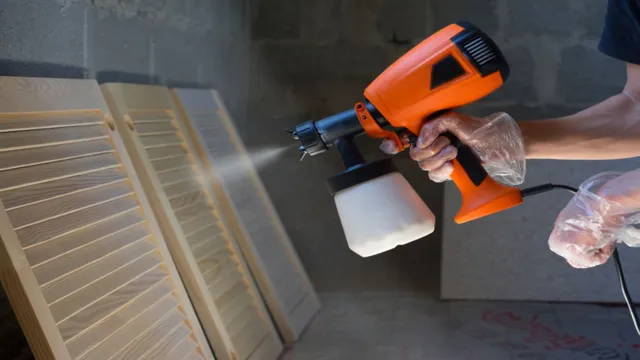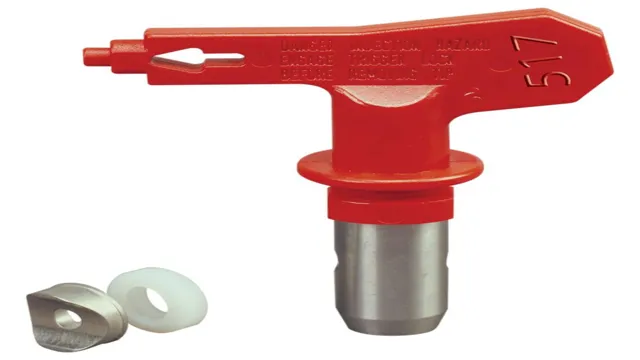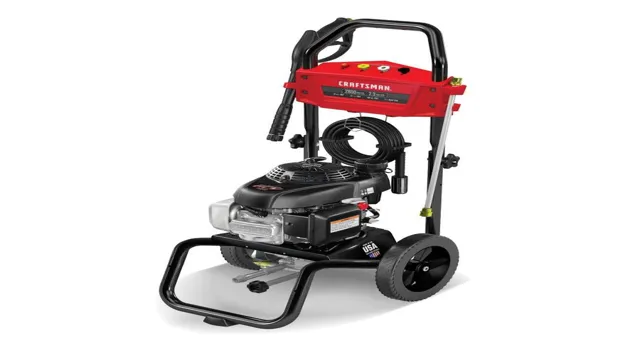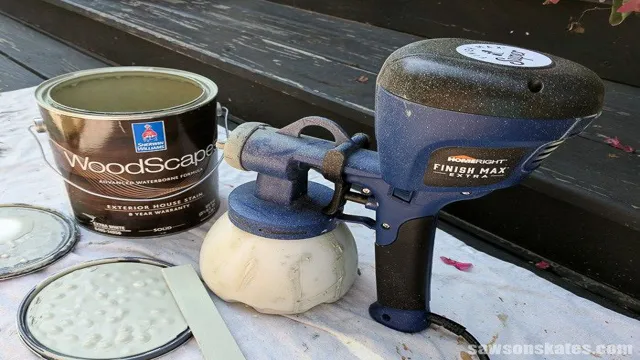What Paint to Use with a Paint Sprayer: Tips and Recommendations

If you’re planning to do some DIY painting in your home, or you’re a professional painter, choosing the right paint for your sprayer is crucial. Not all paints are created equal and depending on your project requirements, picking the wrong type could result in a shoddy finish or even damage to your spray equipment. With so many options available on the market, it can be overwhelming to know which paint to select.
But don’t worry, we’ve got you covered! In this blog, we’ll share some tips so that you can choose the right paint for your sprayer and ensure a smooth and successful painting experience.
Understanding Paint Formulas
When it comes to using a paint sprayer, it’s crucial to understand the different types of paint formulas that are compatible with the tool. One important factor to consider is viscosity, as thicker paints can cause clogs in the sprayer and compromise the quality of the finish. Water-based paints tend to be more user-friendly for sprayers, but oil-based paints can also work with the right thinning agent.
It’s also essential to choose a paint that is appropriate for the surface being painted- for example, using masonry paint for a brick surface or metal paint for a metal surface. Overall, for optimal results with your paint sprayer, it’s best to carefully select a paint formula that is compatible with the tool and suited to the surface being painted.
Latex Paints
Latex paints are a popular choice for many homeowners due to their ease of use, versatility, and low VOC content. However, understanding paint formulas can be a bit confusing. Latex paints are water-based and are made with a combination of synthetic resins, pigments, and additives.
The resin provides the binder that holds the pigments together, while additives enhance the paint’s flow, adhesion, and durability. Pigments give the paint its color and opacity. Additionally, some paints contain additives like fungicides or mildewcides to prevent mold growth.
Understanding the different components of latex paint formulas is essential in choosing the right type of paint for your project. Furthermore, it’s important to note that not all latex paints are created equal, and each paint brand may have a slightly different formula. Therefore, it’s best to consult with a professional or do thorough research before selecting a specific brand for your home improvement project.
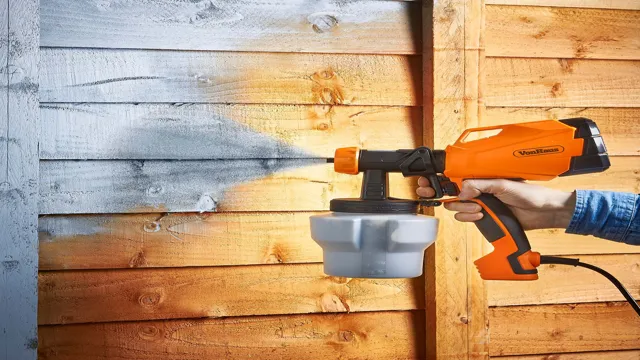
Oil Paints
When it comes to oil paints, understanding the different formulas can make all the difference in the final result of your painting. The mainstay of oil paint formulas is linseed oil, which improves the spreadability of the pigment and enhances the appearance of the colors. Other oils commonly used in oil paints include poppy seed oil, walnut oil, and safflower oil.
Each oil has its own unique properties that affect the paint’s texture, drying time, and level of transparency. Additionally, certain pigments require specific oil blends to create a successful painting. Overall, it’s important to experiment with different oil paint formulas and determine which works best for your desired outcome.
Acrylic Paints
Acrylic paints are a popular medium for artists due to their versatility and fast drying time. However, it’s important to understand the different formulas of acrylic paints available in the market. There are two main types of acrylic paints: student grade and artist grade.
Student grade paints are cheaper and have less pigment and opacity compared to artist grade paints. On the other hand, artist grade paints have a higher pigment concentration, better lightfastness, and are more expensive. Another factor to consider when buying acrylic paints is the consistency or viscosity.
Acrylic paints can be thin or runny, thick or buttery, or heavy-bodied. The consistency you choose depends on your preference and the style of painting you want to achieve. Lastly, there are also different mediums available that can be mixed with acrylic paints to alter their properties such as drying time, glossiness or matte finish.
Understanding the different formulas of acrylic paints can help you make an informed decision when buying supplies and achieve the desired result in your artwork.
Consistency Matters
When it comes to paint sprayers, getting the right paint consistency is key. Using the wrong type of paint can lead to clogs, uneven spraying, and an overall poor finish. So what paint should you use with a paint sprayer? It depends on the type of surface you’re painting and the type of sprayer you have.
Generally, latex paints work well with airless sprayers, while oil-based paints work better with HVLP sprayers. However, it’s still important to check the manufacturer’s recommendation to ensure the best results. In addition, make sure to consistently stir the paint to maintain the ideal consistency throughout your project.
With the right paint and consistent stirring, your paint sprayer can produce a smooth and professional-looking finish every time.
Thinners and Reducers
When it comes to painting, getting the right consistency is essential for a smooth and even finish. That’s where thinners and reducers come in. These are additives that can alter the viscosity of your paint, making it easier to apply and creating a more attractive end result.
Thinners work by reducing the amount of solids in the paint, which can make it runnier and more transparent. On the other hand, reducers work by breaking down the chemical bonds in the paint, making it thinner and more flowable. It’s important to choose the right thinner or reducer for each type of paint, as well as for the desired consistency.
Too much thinner or reducer can lead to a thinner and less vibrant color, while too little can make the paint too thick and difficult to work with. By experimenting with different combinations, you can achieve the perfect consistency for your artwork. Remember, a little goes a long way, and it’s always better to start with a small amount and add more as necessary.
Viscosity Measurements
Viscosity Measurements When it comes to manufacturing processes, consistency matters. That’s where viscosity measurements come in. Viscosity is a measure of a fluid’s resistance to flow, and it’s a critical factor in ensuring product quality and process efficiency.
By measuring viscosity, manufacturers can regulate the flow of fluids through pipes and machinery, preventing blockages and ensuring optimal performance. They can also ensure that the viscosity of their products is consistent from batch to batch, ensuring predictable and repeatable results. From food and beverage processing to chemical manufacturing, viscosity measurements play a vital role in keeping production lines running smoothly and delivering high-quality products to consumers.
By utilizing reliable viscosity measurement techniques, manufacturers can optimize their processes and improve their bottom line.
Sprayer Tips for Different Paints
Choosing the right paint for your paint sprayer is key for a successful and efficient project. The type of paint you use will depend on the material you will be painting and the finish you prefer. Latex paints are the most commonly used because they are easy to use and clean up, making them perfect for DIY projects.
However, it’s essential to choose a thinner latex paint to prevent blockages in the sprayer. Oil-based paints are great for wood because they dry hard and provide a lasting finish, but it’s important to note that they require more time to dry and clean up. When working with metal, epoxy paints are preferred due to their durability and resistance to corrosion.
These tips will help you make the right decision when selecting paint for your paint sprayer, ensuring a smooth and even finish every time.
Latex Paints
Latex paints are a popular choice among homeowners because of their fast drying times, low VOCs, and easy cleanup with soap and water. However, when it comes to using a paint sprayer, it’s essential to understand the best tips and techniques for achieving a smooth and even finish. One of the most critical factors is to choose the right tip size for your sprayer.
Latex paints typically require a larger tip size between 0.015-0.019 inches to accommodate their thicker consistency.
It’s also crucial to adjust the pressure settings to ensure the paint flows smoothly through the sprayer without creating splatter or drips. Another pro tip is to strain the paint before using it to remove any lumps or debris that can clog the sprayer. With these tips in mind, you can achieve a professional-looking finish with your latex paint sprayer project.
Oil Paints
Oil paints are known for their rich colors and smooth textures, making them a popular choice for artists who want to create masterful works of art. When using a sprayer to apply oil paints, there are a few important tips to keep in mind. For starters, it’s essential to choose the right nozzle size based on the consistency of your paint.
If you’re working with thicker, more viscous oil paints, you’ll want to use a larger nozzle to ensure that your paint sprays smoothly and evenly. On the other hand, if you’re working with thinner oil paints, a smaller nozzle will allow you to achieve greater precision and control. Additionally, it’s important to use a sprayer that is designed specifically for oil paints, as this will help you to get the best results possible.
By incorporating these tips into your painting process, you can create stunning works of art that are sure to impress.
Cleaning Your Sprayer After Use
When using a paint sprayer, it’s essential to choose the right paint for the job. Typically, you’ll want to use a paint that’s designed specifically for sprayers. This type of paint has a smoother texture and is more viscous, making it easier to spray and ensuring an even coat.
Additionally, it’s crucial to clean your sprayer thoroughly after each use to prevent clogs and ensure that the tool continues to work effectively. Start by flushing the sprayer with water and then use a cleaning solution specifically designed for sprayers. This will help remove any remaining paint or debris and ensure that the sprayer is ready to go for your next project.
Remember, taking care of your sprayer can help extend its lifespan and save you money in the long run.
Conclusion
In conclusion, when deciding what paint to use with a paint sprayer, it’s important to consider the specific needs of your project. For a smooth finish, go with a high-quality, thin paint that can be easily sprayed without clogging the sprayer’s nozzle. And if you want to unleash your inner artist, experiment with different paint types and colors to create unique textures and effects.
Remember, the right paint can make all the difference in achieving a flawless and fabulous finish – so don’t be afraid to get creative and have fun with it!”
FAQs
What type of paint is best to use with a paint sprayer?
Latex paint or oil-based paint are both suitable for use with a paint sprayer. It is important to carefully read the manufacturer’s instructions to determine which type of paint is recommended for the specific sprayer model.
Can water-based paint be used with a paint sprayer?
Yes, water-based paint can be used with a paint sprayer. However, it may require thinning before use and it is important to refer to the manufacturer’s instructions for the proper thinning ratio.
What is the recommended viscosity for paint used with a paint sprayer?
The recommended viscosity for paint used with a paint sprayer is typically between 15-50 seconds in a viscosity cup. It is important to follow the manufacturer’s instructions to determine the exact viscosity range for the specific sprayer model.
Is it necessary to use a specific type of paint sprayer for different types of paint?
Yes, it is important to use the correct type of paint sprayer for the specific type of paint being used. For example, an airless paint sprayer is best for latex paints, while a HVLP (high volume, low pressure) paint sprayer is better suited for thinner materials like stain and lacquer.
Can oil-based paint be sprayed using a HVLP paint sprayer?
Yes, oil-based paint can be sprayed using a HVLP paint sprayer. However, it is important to thin the paint first and use the appropriate nozzle size for the specific type of paint being used.
How do I clean a paint sprayer after use?
To clean a paint sprayer after use, first, flush out any remaining paint using the appropriate thinner for the type of paint used. Then, disassemble the sprayer and clean each part thoroughly with warm, soapy water. Rinse with clean water and allow all parts to dry before storing.
What is the best way to ensure a smooth finish when using a paint sprayer?
To ensure a smooth finish when using a paint sprayer, it is important to use the appropriate nozzle size for the specific type of paint being used, thin the paint if necessary, and maintain a consistent spraying speed and distance from the surface. It may also be helpful to practice on a scrap surface before beginning the actual project.

